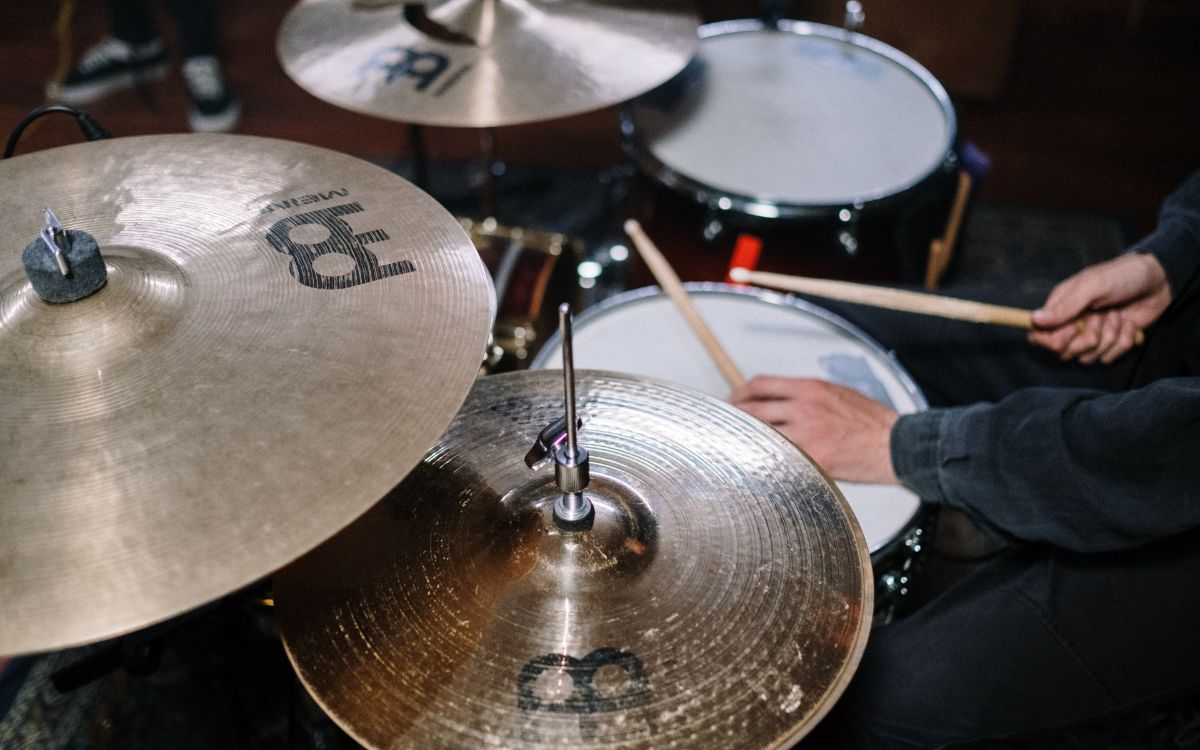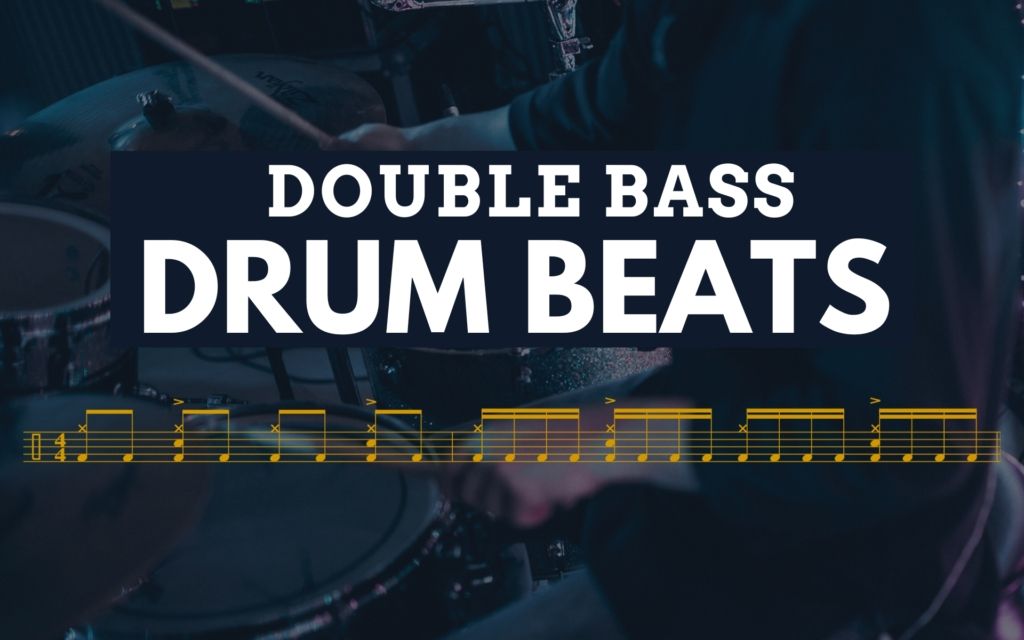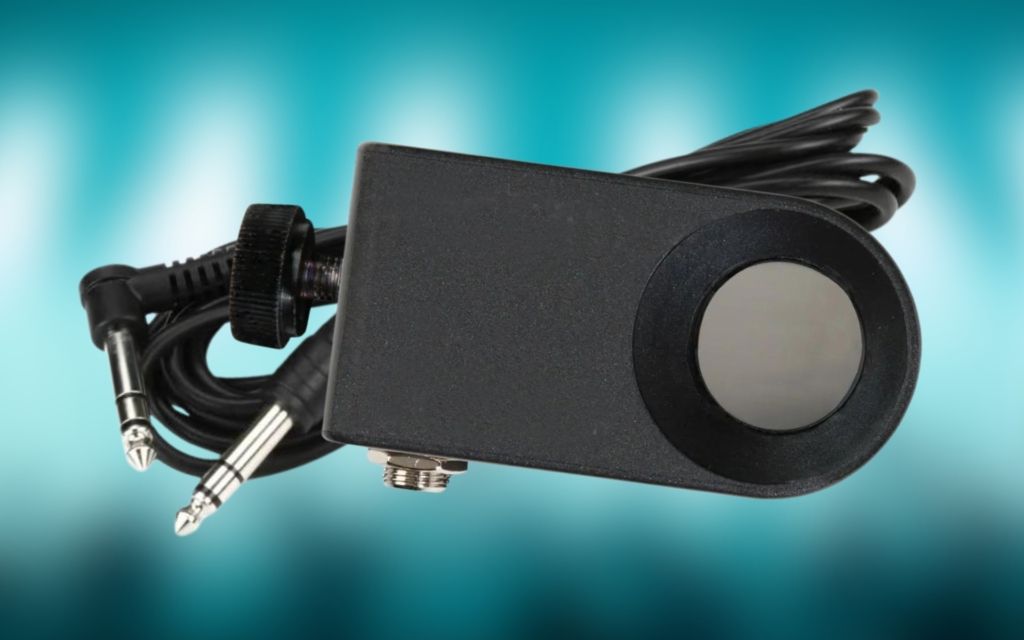There are tons of tutorials out there to help you construct hip hop drum beats using samples, drum machines, or pre-existing loops… Instead, today we’re moving away from any DAW or drum machine, and instead, looking from the perspective of a real drummer, sitting at a real drum kit – which will make your grooves more real too.
We’ll take you through the five key steps to create your own hip hop drum pattern completely from scratch.
Contents
Step 1 – The Foundation

This method utilizes the well-known rock/pop groove many drummers master in their first drum lessons. This will form the framework in which we can build our hip hop groove.
I’ve chosen to make this a two-bar groove. It’s worth noting that typical hip hop beat structures will just look at a single bar and loop it. We’ll add some variation here in the second bar to get the most out of the tutorial, but as you’ll see in step 5 we can strip back if it all gets a bit complicated!
Step 2 – Disruption

Now we have the foundation of a basic hip hop drum pattern we can look at the second step – creating disruption within the established groove.
For the purposes of this tutorial, we’ll define disruption as the movement of either our foundational downbeat (that’ll be the kick drums on 1 and 3) or the backbeat (the snare drums on 2 and 4).
A good rule of thumb is to move one of the four kicks or snares per bar by simply an eighth note, retaining 3/4 of the original structure.
So, in this example:
In bar one, we’ll move the kick drum that typically falls on beat 3, one eighth note later.
In bar two, we’ll move the snare drum that typically falls on beat 4, one eighth note earlier.
Now we’ve created disruption within the established rock groove. This disruption – moving the expected downbeats or backbeats earlier or later – is absolutely crucial in creating the uniqueness of your own hip hop groove.
Step 3 – Augmentation

We’ve got a good, solid groove now, but the disruption can create some fairly empty positions within the bar. The processes of augmentation (a fancy word for “adding some more notes in”) means we can create interest without destroying what we’ve already worked through so far.
It’s good to incorporate the next subdivision here – introducing sixteenth notes helps bring the extra variety we’re craving!
So, in this example:
In bar one, we’ll add a snare drum to the a of 2 (2e+a).
In beat two, we’ll add a kick drum to the + of 1 (1e+a), a snare to the a of 2 (2e+a) and another snare to the a of 4 (4e+a).
Our groove is filling out, becoming more complex and well rounded. As you augment you will naturally hear where you need to add or take away to create your own unique beat.
Step 4 – Ornamentation

Whilst the use of the word ornamentation is usually reserved for a more classical, traditional approach, it’s a great way to describe the musical flourishes we need to finish this groove.
So, in this example:
In bar one and two, we’ll add an open hi hat to the + of 1 (1e+a).
In bar one and two, we’ll change the snare on the a of 2 (2e+a) to a ghost note, doing the same to a of 4 (4e+a) in the second bar too.
What do you think? If you’re a hip hop traditionalist, maybe you’re thinking that this groove is starting to sound a little too busy. If so, there are things you can do to keep working with what you have until you’re happy with it.
Step 5 – Context

The last step is a little more subjective. Groove construction and composition is all about context. A groove is, quite simply, just a groove until it’s placed within the context of a track. What we’ve written so far could easily fit an r&b track, a funk track, or even a pop track.
Play around with the tempo. It’s quite the ballpark but hip hop tends to be around the 90bpm mark. 90bpm gives us enough space for lyrics and/or scratching to poke through in the arrangement without feeling rushed. But every rule is meant to be broken – so feel free to go as high as 150bpm if the composition demands it.
Ultimately though, with hip hop, the idea is to keep it simple. We’ve demonstrated a bunch of ideas above, but we’ve gotten a little ahead of ourselves. So, for the final stage we’ve taken some drastic steps to take the groove more towards what we could achieve with a tried and tested hip hop approved drum machine, such as the Roland TR-808.
So in this instance, we’ve taken out the open hi hats, brought the two of the three snares back to normal articulations and – gasp! – removed the hi hats. We’ve adjusted the tempo to 95bpm so the groove has enough room to make an impact without creating too small of a gap for the vocals or scratching to get lost (helped by removing the hi hat in this instance).
In Summary, To Create Your Own Hip Hop Drum Patterns:
Step 1 – take a two bar rock groove
Step 2 – disrupt one of the four kicks or snares in both bars by moving an eighth note earlier or later
Step 3 – add extra kicks or snares at a sixteenth note subdivision
Step 4 – add additional articulations such as open hi-hats
Step 5 – revise as per the composition you’re working towards
━━━━━━━━━━━━━━━━━━━━━━━━━━━━━━━━━━━━━
This guest blog was written by my friend Jack at Make More Music. Make More Music boasts a superb roster of reliable, experienced music teachers. Each teacher is qualified at a degree level minimum and has industry experience. Lessons are available worldwide online, or in London and surrounding areas in your own home or at a dedicated studio.









